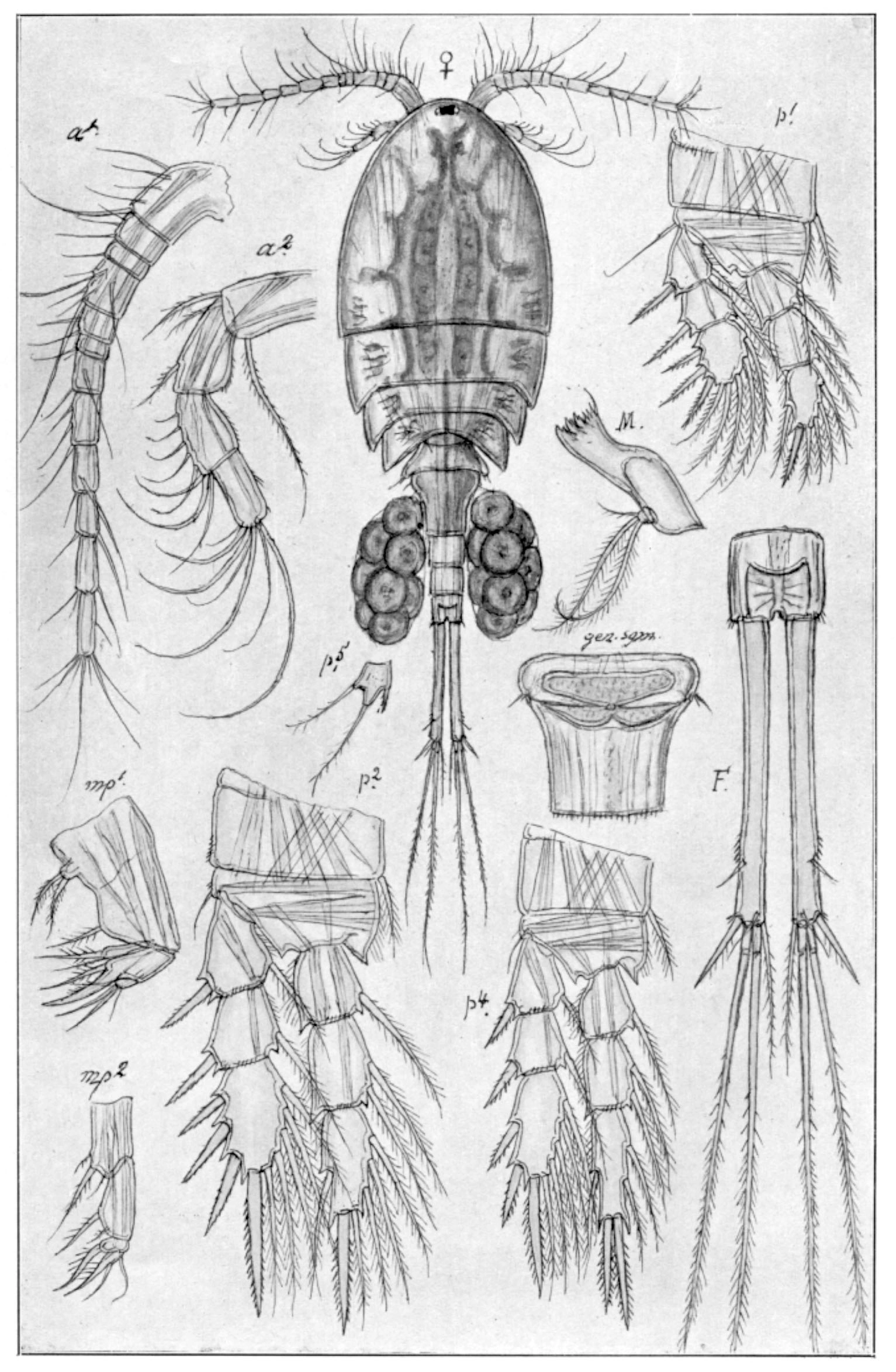Eucyclops macrurus
Eucyclops macrurus is characterized to be a very acid sensitive species. It has a very long furca where the outer margins of the two branches have no rows of teeth.
Key characteristics
Eucyclops macrurus (female)
Eucyclops macrurus has a body which is rather slender and with a very long furca (more than 10 times as long as wide). The outer margins of the two branches have no rows of teeth but a few small spinules occur near the lateral setae. The anterior antennae are shorter than in the other Eucyclops species and there are no teeth on the proximal part of the last joint. Its colour is light yellowish grey, with a olivaceous tinge.
Female: Length 1.1–1.4 mm
Male: Length 0.7–0.9 mm
Ecology and distribution
E. macrurus is found in more than 13 % of the water bodies. It is mainly distributed in the southeast but like E. macruroides it is also found in the north. Though the species is never found above 1000 m a.s.l., it occurs with a relative high frequency up to this altitude. It is most common in the macrophyte zone of lakes and is rare in small ponds (<0,1 ha). E. macrurus is very acid sensitive and there are a few records from lakes having pH<5.5. It is one of the most common copepods in electrolyte rich lakes (>5,0 mS/m).
| Vitenskapelig navn | < 4,5 | 4,5 - 4,9 | 5,0 - 5,4 | 5,5 - 5,9 | 6,0 - 6,4 | 6,5 - 7,0 | 7,0 - 7,4 | > 7,5 |
|---|---|---|---|---|---|---|---|---|
| 0 | 0,4 | 3 | 14,9 | 17,6 | 17,2 | 24,8 | 25,4 |
| Vitenskapelig navn | < 1,0 | 1,0 - 1,4 | 1,5 - 1,9 | 2,0 - 2,9 | 3,0 - 3,9 | 4,0 - 4,9 | 5,0 - 6,9 | 7,0 - 9,9 | > 10,0 |
|---|---|---|---|---|---|---|---|---|---|
| 1,1 | 6,4 | 10,8 | 10,7 | 12 | 17,3 | 31,8 | 23,1 | 18,1 |
| Vitenskapelig navn | < 0,01 | 0,01 - 0,09 | 0,1 - 0,9 | 1,0 - 9,9 | 10,0 - 99 | 100 - 999 | > 1000 |
|---|---|---|---|---|---|---|---|
| 2,9 | 1,5 | 8 | 14,2 | 13,3 | 23 | 37 |
| Vitenskapelig navn | < 100 | 100-299 | 300-499 | 500-699 | 700-999 | >1000 |
|---|---|---|---|---|---|---|
| 18,2 | 17,5 | 13,7 | 5,5 | 13,7 | 0 |
